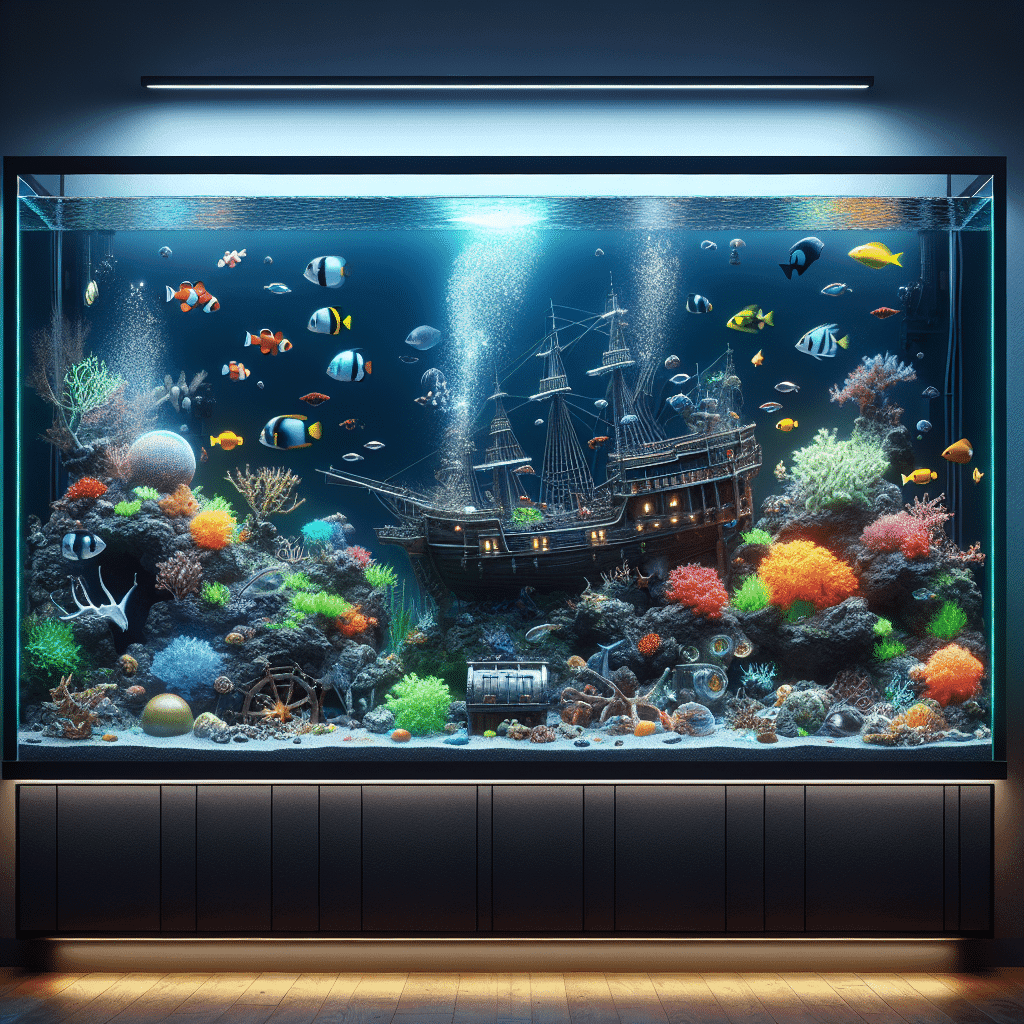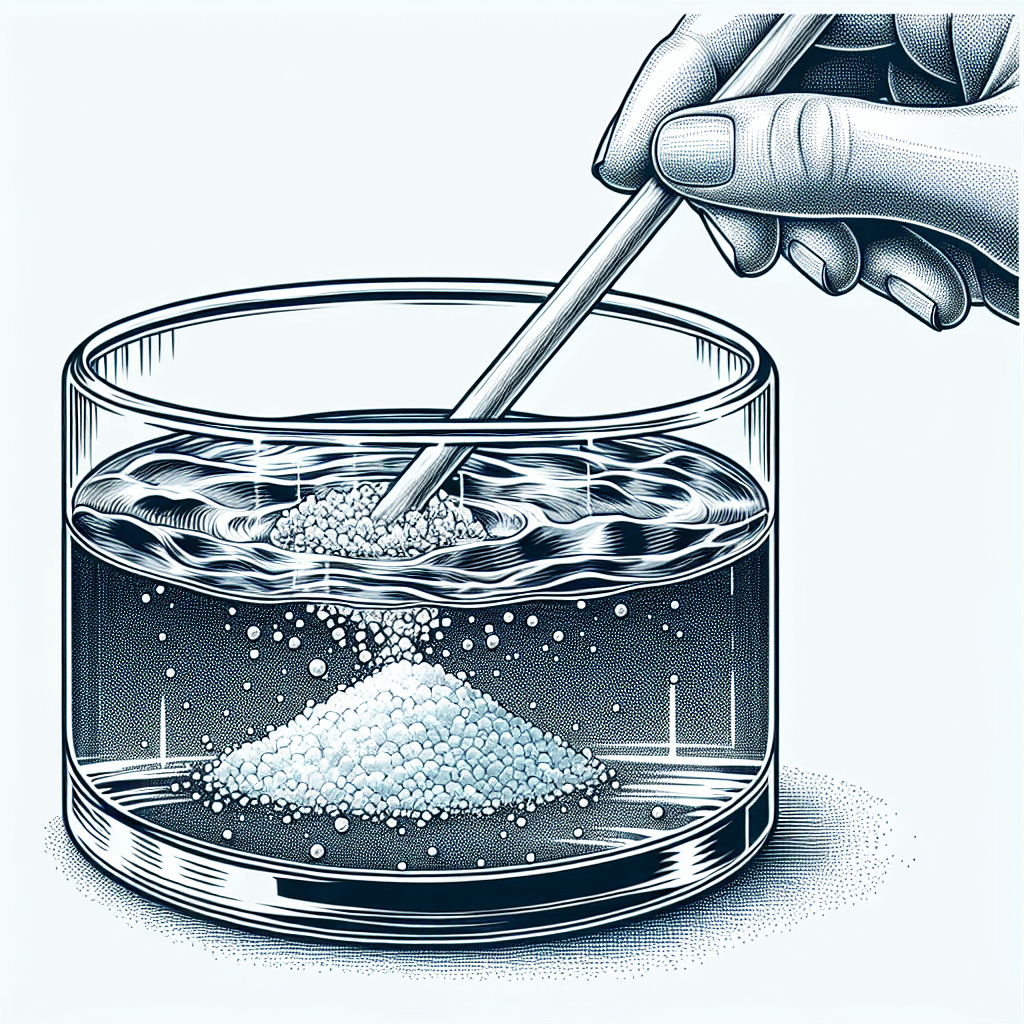The Exciting World of Reef Tanks
Introduction to Saltwater Aquariums
I’m thrilled to dive into the fascinating world of saltwater aquariums! Setting up a saltwater aquarium is an adventure that opens up a vibrant underwater ecosystem right in my living room. Unlike freshwater tanks, saltwater setups provide an opportunity to keep a variety of marine life, including stunning corals and colorful fish. The beauty and diversity of a reef tank are truly captivating.
When I first considered starting a reef tank, I discovered that there are unique considerations compared to setting up a freshwater aquarium. The saltwater aquarium setup involves careful planning, from choosing the right tank size to selecting the appropriate equipment. It’s essential to create a stable environment that mimics the natural habitat of my marine inhabitants.
| Key Considerations | Details |
|---|---|
| Tank Size | Larger tanks help maintain stable water parameters. |
| Equipment | Essential tools include filters, heaters, and lighting. |
| Livestock | Choosing hardy fish and corals suitable for beginners. |
Benefits of Owning a Reef Tank
Owning a reef tank comes with numerous benefits that have me completely excited about this hobby. Here are just a few perks of maintaining a saltwater aquarium:
Biodiversity: I can house a variety of marine species, from colorful fish like Ocellaris Clownfish to beautiful corals. This diversity adds life and color to my space.
Educational Experience: Caring for a reef tank allows me to learn about marine ecosystems, water chemistry, and the importance of balancing my aquarium’s environment. Understanding water safety is crucial to ensuring my marine life thrives.
Stress Relief: Watching the gentle movements of fish and the flow of corals can be incredibly calming. My reef tank provides a peaceful retreat where I can unwind.
Community: Joining a community of fellow hobbyists has been invaluable. Sharing tips and experiences helps me grow as an aquarist and enables me to troubleshoot issues that arise.
Aesthetic Appeal: A well-maintained reef tank is a stunning centerpiece that can enhance the beauty of any room. The interplay of colors and light creates a captivating display that I love sharing with friends and family.
Starting a reef tank is an exciting journey filled with learning and discovery. With the right preparation and knowledge, I can create a thriving underwater paradise for myself and the diverse marine life I choose to keep. Exploring topics like aquarium maintenance and light management will be essential as I embark on this adventure.
Setting Up Your Saltwater Aquarium
Setting up a saltwater aquarium is an exciting journey, and I can’t wait to share the basics that will help me create a thriving reef tank. From choosing the right tank size to ensuring the ideal environment, each step is crucial for success.
Choosing the Right Tank Size
Selecting the perfect tank and stand is essential for my saltwater aquarium setup. There are various tank sizes and styles available to fit different spaces, ranging from mini/nano aquarium kits for smaller areas to show-size display aquariums for larger spaces. Here’s a quick overview of common tank sizes and their recommended uses:
| Tank Size | Suitable For |
|---|---|
| 5-10 gallons | Nano tanks or small fish |
| 20-30 gallons | Small reef setups or several fish |
| 55-75 gallons | Medium reef or fish tanks |
| 100+ gallons | Large display aquariums with diverse marine life |
I need to consider the space I have available and the type of marine life I want to keep while choosing my tank size.
Essential Equipment for Success
To ensure my aquarium thrives, I’ll need some fundamental equipment. Here’s a list of essential items for a successful saltwater aquarium setup:
| Equipment | Purpose |
|---|---|
| Filter | Maintains water quality and removes waste |
| Heater | Keeps the water at a stable temperature |
| Light | Provides necessary illumination for corals and fish |
| Protein Skimmer | Removes dissolved organic compounds (optional but beneficial) (The Spruce Pets) |
| Live Rock | Offers shelter and habitat for marine life (The Spruce Pets) |
| Hydrometer | Measures the specific gravity or salt content of the water (The Spruce Pets) |
| Sea Salts | Necessary to create the saltwater environment (The Spruce Pets) |
Each piece of equipment plays a vital role in maintaining the health of my aquarium and its inhabitants.
Creating the Ideal Environment
An ideal environment is crucial to the success of my saltwater aquarium. I need to pay attention to various factors, such as water quality, temperature, and lighting. The type of lighting I choose depends on the planned system and the type of livestock I want to keep.
For a fish-only tank, I can opt for less expensive lighting options. However, if I plan to keep corals or other sensitive marine life, I’ll need to invest in reef tank lighting, which can be more complex and costly (The Spruce Pets).
In addition to lighting, I need to regularly test my water parameters and maintain proper water safety. This includes monitoring pH levels, alkalinity, and nitrate concentrations. By creating a stable environment, I can ensure the health and happiness of my future marine life.
With these foundations, I am ready to embark on my saltwater aquarium adventure!
Cycling Your Reef Tank
Cycling my reef tank is one of the most exciting yet crucial steps in setting up a successful saltwater aquarium setup. It ensures that the environment is safe for my future fish and corals. Here’s what I’ve learned about the nitrogen cycle, seeding my tank with beneficial bacteria, and testing water parameters.
Understanding the Nitrogen Cycle
The nitrogen cycle is a fundamental process in my saltwater aquarium. It involves beneficial nitrifying bacteria such as Nitrosomonas, Nitrobacter, and Nitrospira. These organisms work tirelessly to break down harmful waste products like ammonia and nitrite, transforming them into less harmful nitrate (Bulk Reef Supply).
This process typically takes about 2 to 6 weeks to complete, depending on my setup and how actively I help the process along. During this time, I need to be vigilant about monitoring ammonia, nitrite, and nitrate levels to ensure everything is progressing smoothly.
| Cycle Stage | Substance | Bacteria Involved | Result |
|---|---|---|---|
| Stage 1 | Ammonia | Nitrosomonas | Converts ammonia to nitrite |
| Stage 2 | Nitrite | Nitrobacter | Converts nitrite to nitrate |
| Stage 3 | Nitrate | Nitrospira | Nitrate is less harmful |
Seeding Your Tank with Beneficial Bacteria
To help speed up the cycling process, I can seed my aquarium with beneficial bacteria. Products like BioDigest by Prodibio and FritzZyme 9 contain concentrated nitrifying bacteria that can kick-start the biological cycle. Using these products is especially useful for new tanks or after significant water changes (Reef Builders).
These beneficial bacteria will thrive by consuming the ammonia and nitrite produced by my fish and any other organic waste in the tank, ultimately helping to keep the environment healthy.
Testing Water Parameters
Throughout the cycling process, I need to test my aquarium water almost daily for levels of ammonia, nitrites, and nitrates. Observing any spikes in these levels indicates that the cycle is progressing. Once the nitrate levels rise and the levels of ammonia and nitrite fall back to zero, my nitrogen cycle is considered complete (Reef Builders).
The ideal nitrate levels for a reef tank should be below 5ppm, while fish-only reef tanks can tolerate levels up to 40ppm. Here is a quick reference of the ideal parameters during cycling:
| Water Parameter | Ideal Level |
|---|---|
| Ammonia | 0 ppm |
| Nitrite | 0 ppm |
| Nitrate | Below 5 ppm (for reef tanks) |
By understanding the nitrogen cycle, seeding my tank with beneficial bacteria, and regularly testing water parameters, I can create a thriving environment for my future marine life. For more tips on maintaining my aquarium, I can check out articles on water changes and aquarium maintenance.
Adding Marine Life to Your Tank
Adding marine life to my saltwater aquarium is one of the most thrilling parts of the journey. It’s essential to choose the right fish, ensure they adapt properly, and follow quarantine procedures to keep my tank healthy.
Selecting Beginner-Friendly Fish
When starting my saltwater aquarium setup, I aim to select fish that are hardy and easy to care for. Here’s a list of some fantastic beginner-friendly options:
| Fish Name | Description |
|---|---|
| Ocellaris Clownfish | Known as the False Percula Clownfish, it’s popular and easy to acclimate. (The Spruce Pets) |
| Coral Beauty Angelfish | A vibrant dwarf angelfish that is hardy and inexpensive. (The Spruce Pets) |
| Flame Angelfish | Adapts well to captivity and is best kept singly or in mated pairs. (The Spruce Pets) |
| Lawnmower Blenny | Great for controlling algae in the tank. (The Spruce Pets) |
| Auriga Butterflyfish | Easy to keep with non-aggressive fish, though it may take time to adapt to prepared foods. (The Spruce Pets) |
These fish are not only beautiful but also contribute to the overall health of my aquarium ecosystem!
Acclimating New Fish
Once I have selected my new marine life, I need to acclimate them properly to ensure their successful transition into my tank. Acclimation helps reduce stress and allows fish to adjust to the temperature and salinity of my aquarium.
- Float the Bag: Place the sealed bag with the fish in my aquarium for about 15-20 minutes to equalize the temperature.
- Gradual Mixing: Open the bag and gradually mix some of my aquarium water into the bag. This should be done over the next 30 minutes.
- Transfer the Fish: After acclimation, gently net the fish and place them in the tank, avoiding adding any bag water.
Taking the time to acclimate my fish helps ensure a smoother transition and reduces the chance of shock.
Quarantine Procedures
To maintain a healthy reef tank, I follow quarantine procedures for any new fish before introducing them to my main aquarium. This helps prevent the spread of diseases.
- Set Up a Quarantine Tank: A separate tank with proper equipment and water conditions is ideal for new arrivals.
- Monitor Health: Observe the fish for any signs of illness, such as abnormal behavior or visible parasites, for at least two weeks.
- Treat as Necessary: If any issues arise, I can treat them in isolation without impacting my main tank.
By following these steps, I protect my existing marine life and ensure that they thrive in their new home. For more information on maintaining a safe environment, check out our articles on water safety and aquarium maintenance.
Maintaining a Healthy Reef Tank
Ensuring my reef tank thrives is an exciting challenge, and I’ve learned that avoiding common mistakes, providing proper care, and sticking to a regular maintenance schedule is essential for success.
Avoiding Common Mistakes
One of the biggest pitfalls I’ve encountered is overfeeding my fish and invertebrates. This leads to uneaten food accumulating at the bottom of the tank, which can cause ammonia, nitrite, and nitrate levels to spike, ultimately overwhelming the biological filter (The Spruce Pets).
Another mistake is moving too quickly with my setup. I’ve learned the importance of researching the requirements of new species and their compatibility with existing ones. It’s advisable to add fish slowly over the course of 4-6 weeks to prevent any compatibility issues.
Overloading the tank with too much livestock or live rock at once can also trigger new tank syndrome. I make sure to let the water quality stabilize after each addition before introducing more inhabitants (The Spruce Pets).
Lastly, I ensure that my filtration and water circulation are adequate. Insufficient biological filtration and poor water flow can lead to low oxygen levels and undesirable algae growth (The Spruce Pets).
Proper Feeding and Care
Feeding my marine life the right amount and type of food is crucial. I’ve found that high-quality pellets and frozen foods are great options. I pay close attention to the feeding guidelines for each species. Here’s a simple feeding schedule I follow:
| Fish Type | Frequency | Food Type |
|---|---|---|
| Small Fish | 2-3 times a day | High-quality pellets |
| Larger Fish | Once a day | Frozen food or pellets |
| Invertebrates | Every other day | Specialized food |
It’s essential to monitor the health of my tank’s inhabitants. I keep an eye out for any signs of stress or illness. If I suspect a disease is present, I seek help to accurately diagnose and treat it to ensure the health of my fish.
Regular Maintenance Tips
Regular maintenance is key to a thriving aquarium. Here are some essential tasks I include in my maintenance routine:
Water Changes: I perform regular water changes, about 10-20% weekly, to maintain water quality. This helps to keep the levels of ammonia, nitrites, and nitrates in check. More details can be found in our article on water changes.
Testing Parameters: I regularly test the water parameters, including pH, alkalinity, and salinity. Keeping these levels in balance is crucial for the health of my marine life. For tips on managing these levels, I refer to our articles on pH management and alkalinity management.
Light Management: I also pay attention to my light settings. Proper light management helps prevent algae overgrowth and promotes coral health. More about this can be found in our guide on light management.
By being mindful of these aspects and sticking to a regular maintenance plan, I can enjoy the vibrant and dynamic world of my saltwater aquarium setup with confidence and excitement!



